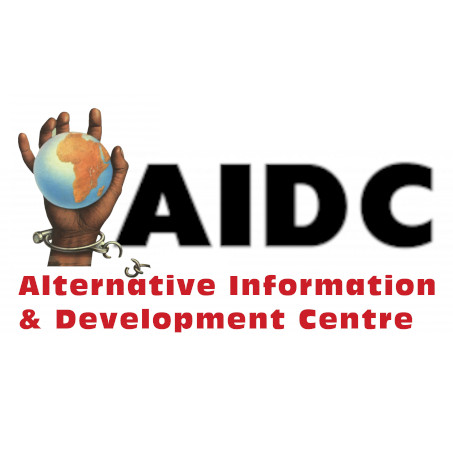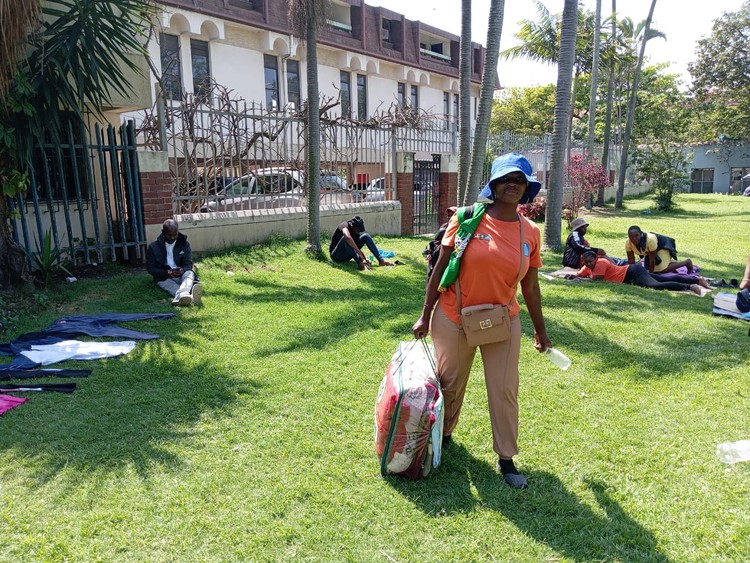Context: The escalation of load shedding and Eskom’s general debilitation has exploded into a national crisis. Unfortunately for South Africans, the government has not confronted this crisis with effective and just solutions. After years of short-sighted policy choices, the government has upheld Eskom’s unbundling and the eventual privatization of the energy sector in hopes of creating a competitive energy market as our salvation, following the dictates of institutions such as the IMF and World Bank.
The #FixEskom public forum was formulated to offer evidence-based analysis on the alternatives to privatization. Specifically how South Africa can build a public pathway to fixing Eskom and transitioning to a low-carbon economy. Moreover, the forum aimed to offer clarity on the complex sources of the energy crisis and demonstrate why privatization will deepen energy poverty, dilute our economic sovereignty, weaken our response to the climate crisis and destabilize South Africa’s energy sector in the long term.
Moderator: Sandra Van Niekerk of Public Services International.
Panellists: Dominic Brown, director of AIDC and Sean Sweeney of Trade Unions for Energy Democracy. To ensure a wide audience was reached, the event was attended in person and streamed on Zoom for online participation.
Input #1 by Dominic Brown: Four policy choices were highlighted as the fundamental source of Eskom’s woes: Eskom’s corporatization and commercialisation burdened the utility with a contradictory mandate: operate like a private company while attempting to provide a public good. The full-cost recovery model restrained Eskom’s financial capacity to service its fleet and invest in new generative capacity. Mass poverty and unemployment means millions cannot afford the electricity Eskom sells.
A 1998 White Paper on Eskom denied the utility’s request to build new generative capacity to meet growing demand. In 2007 load shedding struck as energy supply could not meet demand, as Eskom had warned the government several years before. During the 2010s, Eskom’s fleet was run excessively hard, diluting its generative capacity. Compounding this was the severe neglect of fleet service and maintenance, resulting in an increasingly unstable energy supply.
Here we see that a series of short-sighted policy choices, reflecting the wider push for private-public partnerships or total privatization of SOEs, were key to the implementation of load shedding and central in producing the energy crisis.
Please wait while flipbook is loading. For more related info, FAQs and issues please refer to DearFlip WordPress Flipbook Plugin Help documentation.
Will privatization save us? The speaker highlights that market mechanisms are not effective instruments to deliver public goods such as electricity. Private Embedded Generation hastens Eskom’s death spiral and the Renewable Independent Power Producer Program is in crisis due to low bid prices undercutting profit margins. The incentive to maximize profit demotes the needs of the public into a secondary concern.
These forums are more than just a platform for analysis and discussion but a place to formulate strategies for advocacy and mobilization. In this context, solutions were offered in Brown’s presentation, reflecting the AIDC’s years of research on Eskom and energy:
Close the energy gap (6 gigawatts) by fixing the build defects at the Medupi and Kusile power stations, which could provide an additional 4.4GW to the energy grid within 12 to 14 months
Government must provide Eskom with the licensing and finances to purchase diesel at the cheapest cost to run its open gas cycle turbines
Stabilize the energy supply by fixing Eskom’s fleet. This will require thorough maintenance and therefore Eskom will need finances to cover the costs. The process of procuring parts for maintenance must be direct and contracts publicly disclosed for democratic accountability and to safeguard the utility against corruption.
A long-term reform is the development of renewable energy to initiate a just transition. This will require ending the full-cost recovery model and Eskom’s corporatisation.
Provide Eskom with sustainable funding through progressive public financing
Transforming Eskom’s internal governance so that it functions as a truly transparent and accountable public entity. This move will require effectively combating corruption by stifling networks of patronage within the utility and ending the bad incentives which propel corruption.
Input #2 by Sean Sweeney: This presentation offered insight into the international context as it relates to energy transitions and the role played by international finance institutions. Specifically, the input looked at the failure of energy transitions led by a market approach and the attempt of some states to return to publicly owned and run energy systems. This presentation poses a vital question: if the private sector is to lead investment in renewable energy, what happens if renewable energy is not profitable?
Sweeney’s input compelled attendees to realize that radical and transformative changes to the global political economy are needed to not only overcome the energy crisis in South Africa but climate change around the world.
The analysis presented centered on several claims:
The world is not witnessing an energy transition but an energy expansion. Neoliberal economists assumed the adoption of renewable energy was unavoidable and inevitable. However, energy demand has soared in the past 20 years and so has the use of various kinds of energy be it fossil fuel, solar, wind etc. CO2 Emissions have not significantly decreased but rather dramatically increased, plunging us deeper into the climate crisis.
The green growth neoliberal approach to climate protection and energy transition has not been effective. There has been a growth in private investment into renewable energy but a gap has occurred between current levels of investment and the levels required to ensure we restrain global warming.
The investment in renewable energy has unfolded through market competition, mostly as auctions to get contracts to produce energy, creating a disorderly and unplanned series of ineffective transitions. Worse, renewable energy being cheap does not suppress the profit motive and so investors not gaining profits to cover their costs are dissuaded from pouring the needed money into generating renewable energy.
An alternative public pathway is urgently needed to not only ensure effective planning and coordination but also to ensure democratic transparency and accountability.
Please wait while flipbook is loading. For more related info, FAQs and issues please refer to DearFlip WordPress Flipbook Plugin Help documentation.
Important outcomes: Presentations were followed by a substantive discussion, with panellists responding to inputs and questions from in-person attendees alongside those online attendees on the streaming platform. There was general consensus on the origins of the energy crisis but in light of this, a central question during this session was: what is the way forward?
Rebuilding state capacity. Panellists and attendees acknowledged how weak the South African state had become due to neoliberal policies and years of pervasive corruption. Arguments were put forward for revitalizing public service and administration. Panellists recognized that this was no small task but a vital project if SA is to pursue any kind of progressive socioeconomic reform
Popular education and advocacy. Attendees highlighted the need for progressive civil society organizations and social movements to urgently bolster their work in educating working class and poor communities on the roots of the energy crisis alongside providing people with alternatives beyond privatization. This would entail making research and analysis accessible in various mediums and digestible. Without such mass education, organizing to fight for a public pathway becomes an impossible task.
Build a popular campaign to fix Eskom. Inputs in the discussion reflected the need for a mass campaign to fix Eskom. Such a campaign would require not only the involvement of the working class and poor communities but importantly the active participation of organized labour. Uniting these social forces in a sustained campaign could amass the leverage required to pressure the government into shifting some of its policies and oversight of Eskom.
The forum concluded with the recognition that the task of transforming Eskom and pursuing a just transition through a public pathway will not be easy. Importantly, many saw the issue as a question of power and how progressives alongside popular social forces can come up with effective ways to contest power in pursuit of the public good. Watch the full discussion below.
The post #FixEskom to address South Africa’s energy crisis: Private sector is the problem not the solution to the electricity crisis: a public pathway is possible! appeared first on AIDC Alternative Information & Development Centre.






